Aille River Bridge (10 seconds)
From the front door of the Aille River Tourist Hostel, your view takes in this 15th-century bridge unique for being one of only a few flatbed bridges in Ireland.
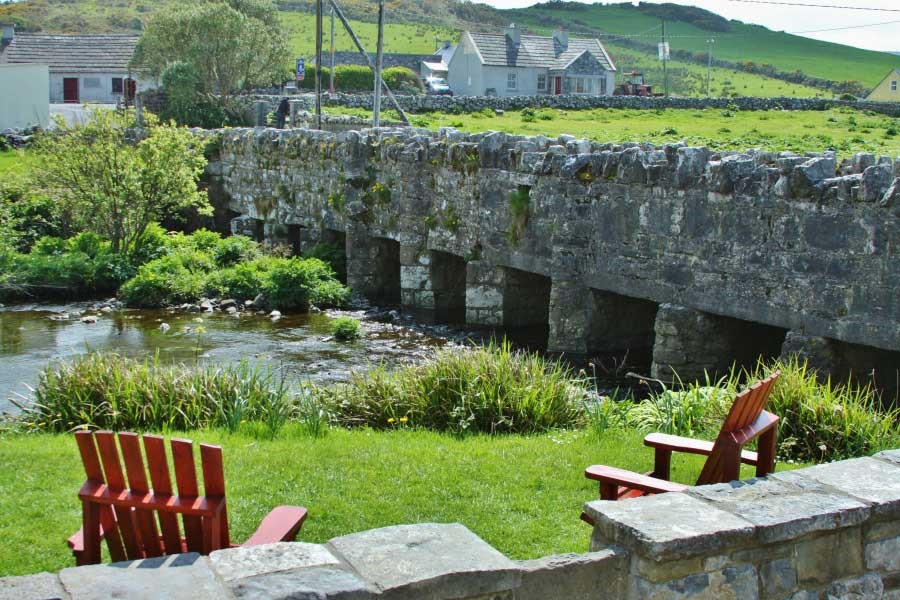
Knockstoolery Standing Stone, Doolin (10 mins walk)
Visible from the Aille River Tourist Hostel, the Knooclstoolery standing stone has a commanding presence from the hill overlooking the centre of Doolin. It is likely prehistoric.
Doonagore Castle, Doolin (15 mins walk 3 mins by car)
This castle is a round 16th-century tower house with a small walled enclosure located about 1Km above the coastal village of Doolin . Its name may mean "the fort of the rounded hills" or the "fort of the goats"; it sits on a hill overlooking Doolin Point and is used as a navigational point by boats approaching Doolin Pier. Doonagore Castle is at present a private holiday home, inaccessible to the public.
While a castle was built on the site by Tadgh MacTurlough MacCon O'Connor from stone drawn from the quarry of Trá Leachain some time during the 1300s, the current structure is likely to date to the 16th century. It was granted to Sir Turlough O'brien of Ennistymon (a neighboring town of Doolin) in 1582. In 1588, during the retreat of the spanish armarda from its failed attempt to invade England, 170 survivors of a Spanish shipwreck were caught by the high sheriff of County Clare, Boetius MacClancy, and were hanged at Doonagore Castle and buried in a barrow near of Doolin called Cnocán an Crochaire.
Doonagore Castle was repaired in the early 1800s, but by the middle of that century had again deteriorated in the care of the Nagle family. It was restored by architect Rex MacGovern of Lardner & Partners again in the 1970s for a private purchaser, an American named O'Gorman whose family still owns it.
A rare round tower house originally dating from the Medieval period and restored in the 1970's.
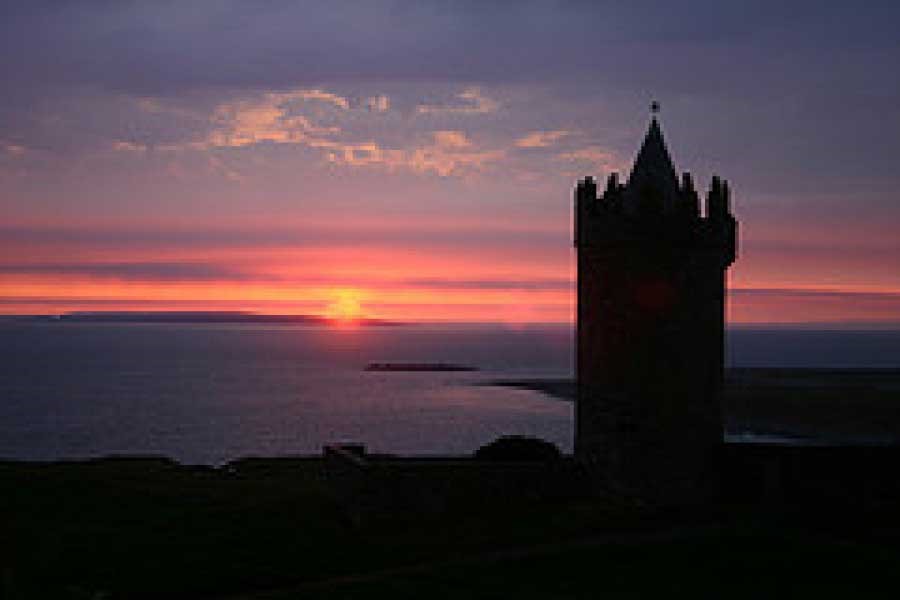
Doolin Cave, Doolin.(45 mins walking or 10 mins by car )
Doolin Cave- Discovered in 1952, the Great Stalactite at Doolin Cave, is becoming one of the most important eco-tourist attractions in Ireland.
Measuring 7.3 metres (23 feet) in length, it is recognised as being the longest stalactite in the Northern hemisphere. Doolin cave was discovered by English potholers exploring the honeycomb of caves tunnelled by the rivers that run underground through the soft limestone of Ireland's famed Burren country. The Great Stalactite has been opened up to the eyes of the world.Tours operate daily from Bruach na Aille Restaurant, a few minutes walk from the hostel.
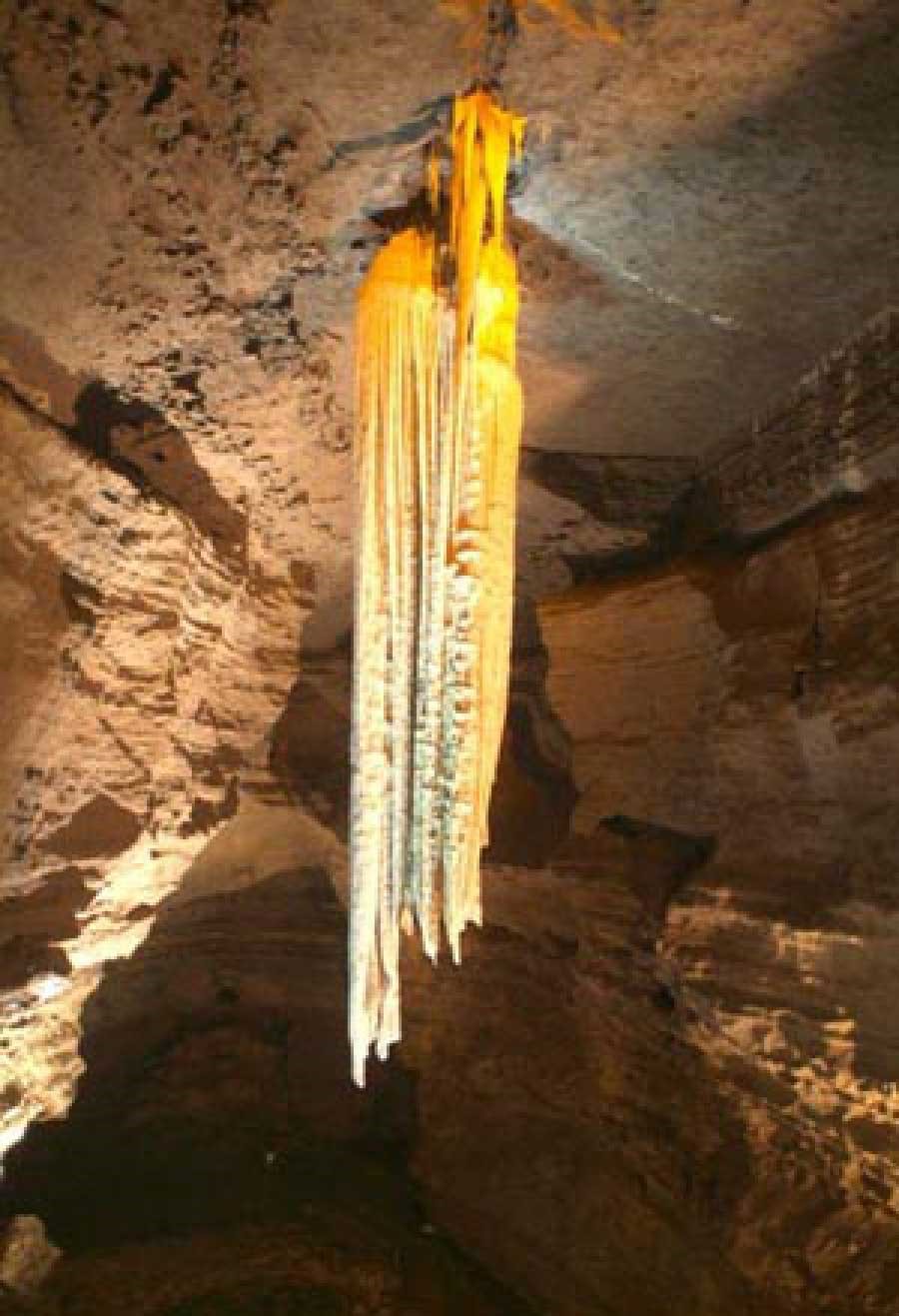
The Cliffs of Moher Trail (15 mins to the beginning of the Cliffs and 2 hours to the top)
These 214-metre cliffs are an imposing sight and not to be missed. The new visitor's centre at the top of the cliffs offers information about the flora and fauna the cliffs shelter.
Cliffs of Moher / Hags Head (9 miles)
A 10-minute drive will bring you to the visitor's centre where breathtaking views from the highest points of the Cliffs can be seen.
The Burren
The Burren is rich with historical and archeological sites, including 90 megalithic tombs, portal dolmens and many ringforts.
Coastal Ringfort Ruins, Doolin-Ballyryan (30 mins walk)
There are at least 14 coastal ringfort ruins along the coast of Doolin. They are good examples of early Bronze Age and Iron Age burial grounds, dating from 2000 BC to about 200 BC.
Doonmacfelim Castle, Doolin (15 mins walk)
Built aroud the 15th century.
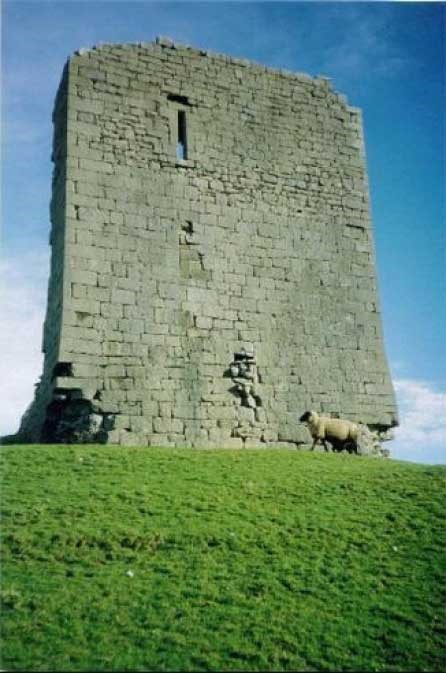
Ballinalaken Castle, Doolin (60 mins walk 15 mins by car)
This 15th century castle is a ruin of the O'Brien Clan.
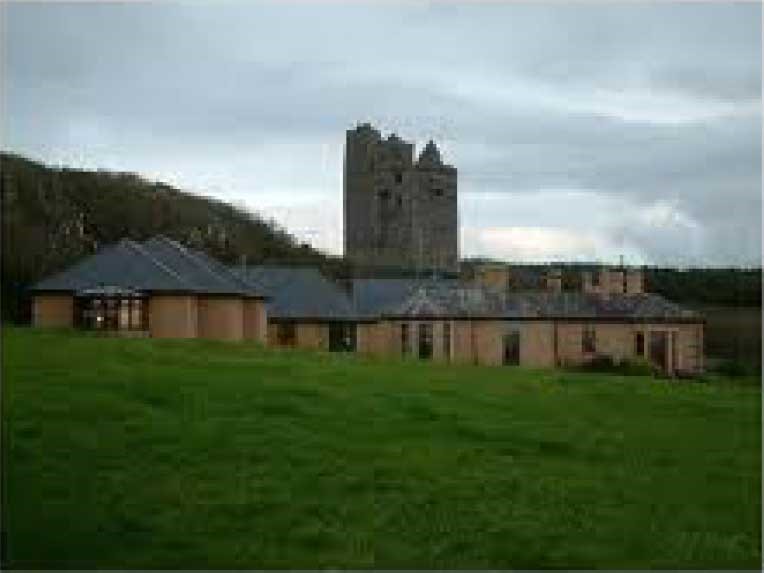
O'Briens Tower, Doolin (15 mins by car)
O'Brien's Tower was built in 1835 by Cornelius O'Brien a descendant of Brian Boru, Kings of Thomond, as an observation point for the hundreds of tourists who even then, visited the Cliffs. The tower stands proudly on a headland of the majestic Cliffs of Moher.

Killilagh Church, Doolin (15 mins walk)
Built in 1470, the church served Doolin and area until 1840. It then served as a burial ground, with graves dating from 1860 to 1985.
Phosphate Mine Ruin and church, Doolin (30 mins walk)
Of all the worked minerals in the Burren, the mining of the phosphate deposits at Doolin and at Noughaval (3.2 km north-east of Kilfenora) was the largest enterprise.
Teergonean Celtic Wedge Tomb, Doolin (30 mins)
Teergonean (land without birds) is a little-visited tomb at the end of a dirt road past Killilagh chuch.

Aillwee Caves, Ballyvaughan (15 miles)
This cave was formed by the glacial melt waters of an early ice age. The erosive power of the waters carved out an subterrainian river deep underneath Aillwee mountain. This river has subsided since the last ice age, leaving behind one of Ireland's most stunning caves.
The cave was discovered by Jack McGann, a local herdsman, in 1940. One day, Jacko was looking after his sheep at the foot of Aillwee Mountain with his dog. The dog gave chase to a rabbit, following it up the mountain and into a small opening in the rocks. Jacko explored this opening with nothing but a candle to guide his way, finding his way right as far as the Great Cascade
Guided tours take you through the 1000 feet long cave where you can see underground waterfalls, unique mineral formatins and hibernation chambers of now extinct brown bears.
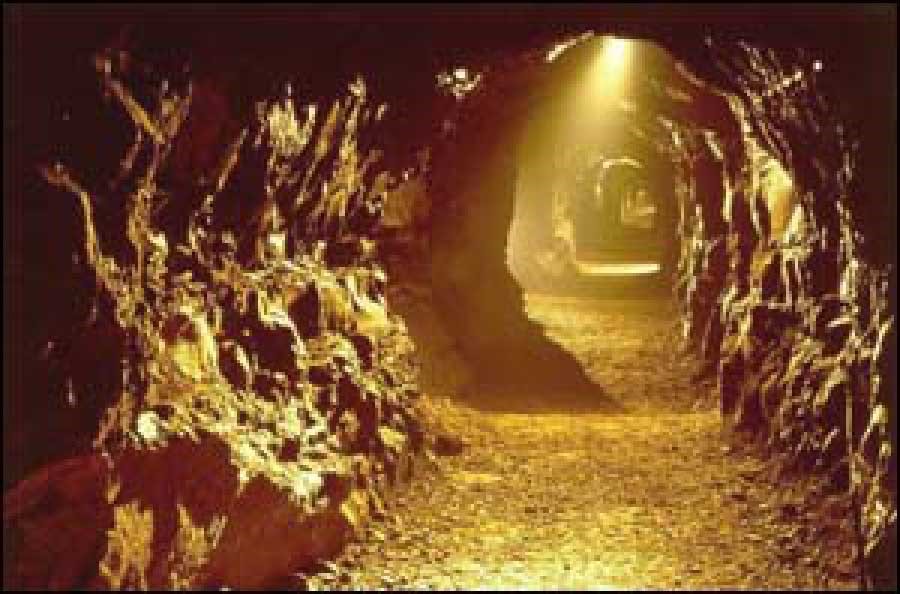
Poulnabrone Burren Centre
Poulnabrone portal tomb or dolmen is one of the best known ancient tombs in Ireland.
It dates from c.3600 BC and faces north-north-east, tapering to the south-south-west. The capstone measures 12 ft by 7 ft and rests lightly on the sidestones, it has its heavier end towards the front of the tomb where two tall portal stones give it a monumental appearance.
A recent excavation revealed the burial system was by disarticulation and inhumation. The finds included unburnt disarticulated remains of between 16 and 22 adults also 6 juveniles. It was estimated on the meagre demographic data that the majority of the adults died before reaching the age of thirty with the exception of one that reached forty.

Kilfenora Cathedral and Burren Castle kilfenora
Is dedicated to St. Fachtna, who founded his monastery here during the sixth century. The original church was probably wooden and was later replaced by a stone building.
Murrough O'Brien burned the abbey church in 1055 and killed many of the inhabitants. Repairs were carried out between 1056 and 1058 but the building was plundered in 1079 and accidentally burned in 1100. The present structure dates from between 1189 to 1200.
The Doorty Cross, re-assembled from broken fragments, stands near the western end of the cathedral. On the western face is the image of a robed Christ above the figure of someone riding a donkey. The eastern face is of more interest, as it shows St. Peter blessing two smaller arm-linked figures; one with an Irish-type crozier is supposed to be a bishop, while the second, holding a tau or T-shaped crozier, may be an abbot. The whole, according to tradition, is a representation of St. Peter or of the church blessing Kilfenora's change from monastic to diocesan status. This would date the cross to 1152, as it seems fairly clear that it commemorates the setting up of the diocese of Kilfenora in that year.
Caherconnel Burren Centre
The Caherconnel Stone Fort is a large and perfect fort, 140 feet to 143 feet in external diameter, nearly circular in plan, and girt by a wall with two faces and large filling; it is 12 feet thick, and from 6 feet to 14 feet high, being most perfect towards the west.
Mullaghmor Burren National Park
Is a beautiful spiral type stoney hill (627 ft) located in the heart of the burren and surrounded by shallow blue/green loughs.
The place is ablaze with the vast array of wild flowers offering there scent and colour to this amazing landscape. Take a walk to the top and absorb how the land has shifted moved and forged new textures over millions of years.
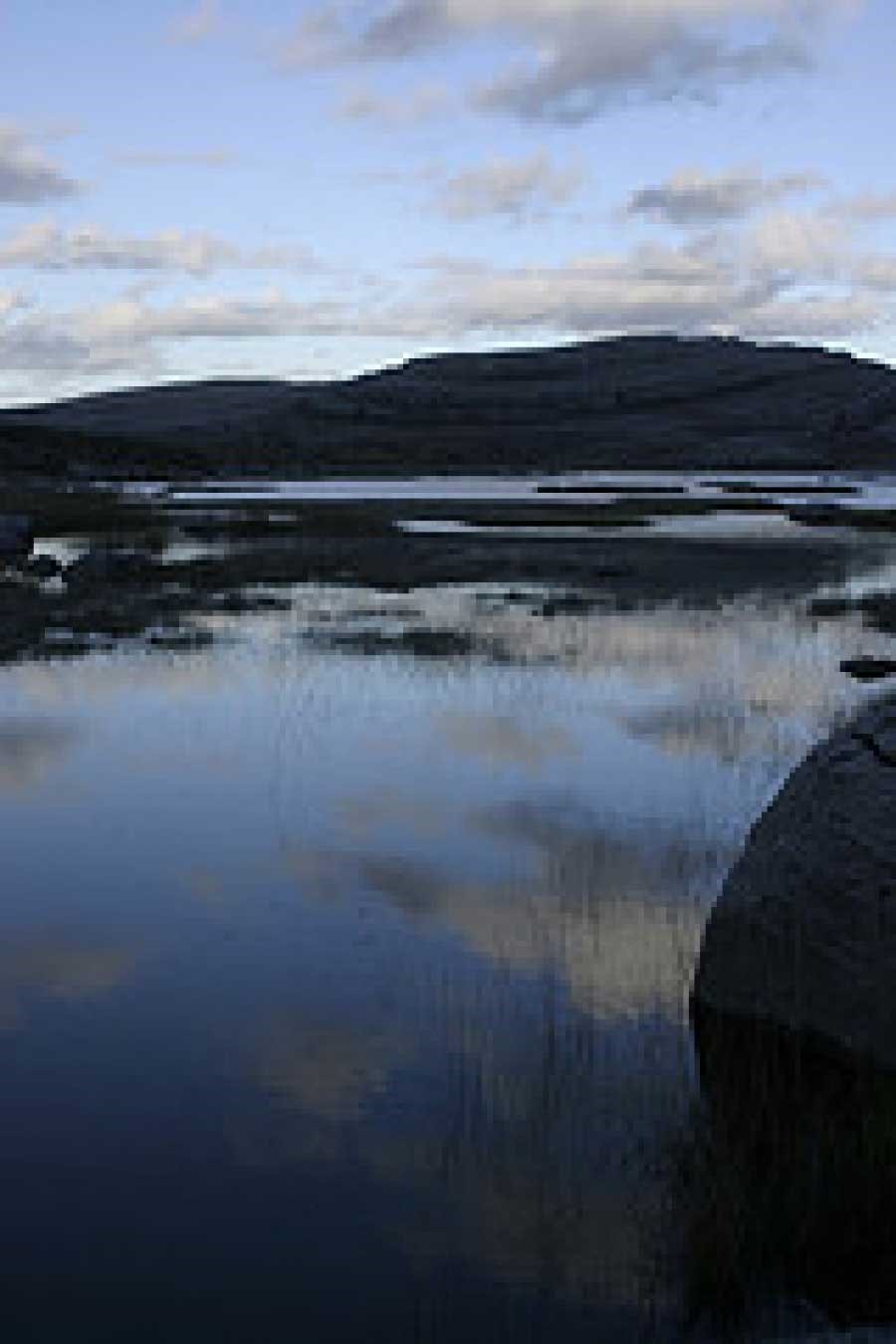
Fanore Beach (10 miles)
A lovely red sand beach with a backdrop of delicate sand dunes acting as protection against the wild Atlantic winds.
The Area has been recently been rejuvenated by adding boardwalks and information sheets about the ecology of the area. Perfect for a swim, surf, Walk, picnic or just to watch the sun go down over Galway bay.
Lahinch Beach
Seaworld and Leisure Centre invites you to explore the world beneath the waves and discover the awesome wealth of the Atlantic Ocean in a thrilling and dramatic way.
The beach is a hotspot for the keen or first-time-out surfer so don the wetsuit and try out these waves.
It is also perfect for a long walk in every season.
Coole Park Near Gort
The National Parks & Wildlife Service welcomes you to Coole Park which, together with the adjoining Garryland, is a nature reserve of approximately 405 hectares (1000 acres). The seven woods celebrated by W.B. Yeats are part of the 6 kilometres of nature trails taking in woods, river, turlough, bare limestone and Coole lake.
Liscannor Rock Shop, Liscannor
An innovative showroom filled with the earth's natural treasures, most are on sale, and there is something for everyone.
Crystals of quartz birthstones and healing crystals, stone vases and trays, magnificent Celtic carvings on slate. Jewellery and jewels to suit all tastes and fashions and of course rock, fossil and mineral specimens for collectors young and old. Also an excellent collection of quarrying tools from days gone by with photographs displaying Liscannor in the 1800s. Liscannor Stone is the name given to a variety of flagstones that rise from the lands around the Cliffs of Moher and the fishing village of Liscannor. Location: 2 KM outside Liscannor on the R478, towards Doolin.
Moher-Hill Pet Farm, Liscannor
Moher Hill Open Farm and Leisure Park provide attractions for young and old, natives and tourists.
The delightful Nature Walk with a breathtaking view is a paradise for anyone seeking the peace and tranquillity of the countryside. Come and see the Vietnamese Pot Belly Pig, Pony Donkey, Llama, Deer, Goats, Sheep, many rare birds and domestic fowl or trigger memories of nostalgic times from long ago with our old farm machinery.
St. Bridget's Well, Liscannor
The tradition about this saint is, that she led the Virgin Mary to the place of purification on the 2nd of February, and that the 1st of February was dedicated to herself on that account.
If there is a cure performed at any time by the application of this water, it is ascribed solely to the interposition of St. Bridget. The holy wells all over Ireland are strong mineral waters, and were dedicated to some saint by the priests of the day, who enjoined it as a religious duty on the people to resort to them, for the purpose of having miracles wrought by those saints, and thereby increasing veneration for the priests themselves.
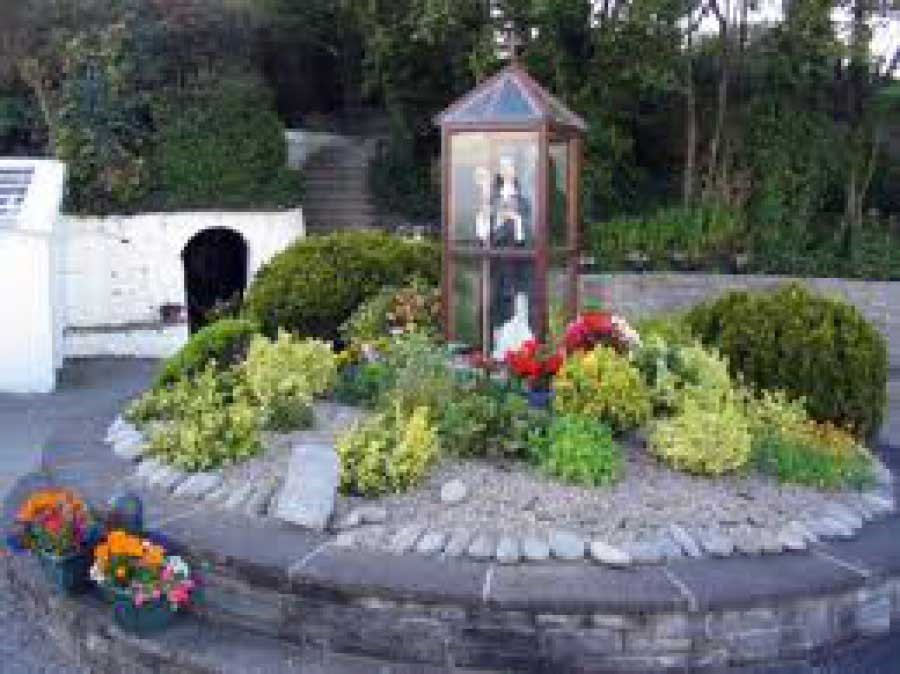
Burren Perfumery Carron
Located in the heart of the Burren, the Burren Perfumery and Flora Centre is Ireland's oldest perfumery shop and worth a stop for their audio visual and photographic exhibitions.
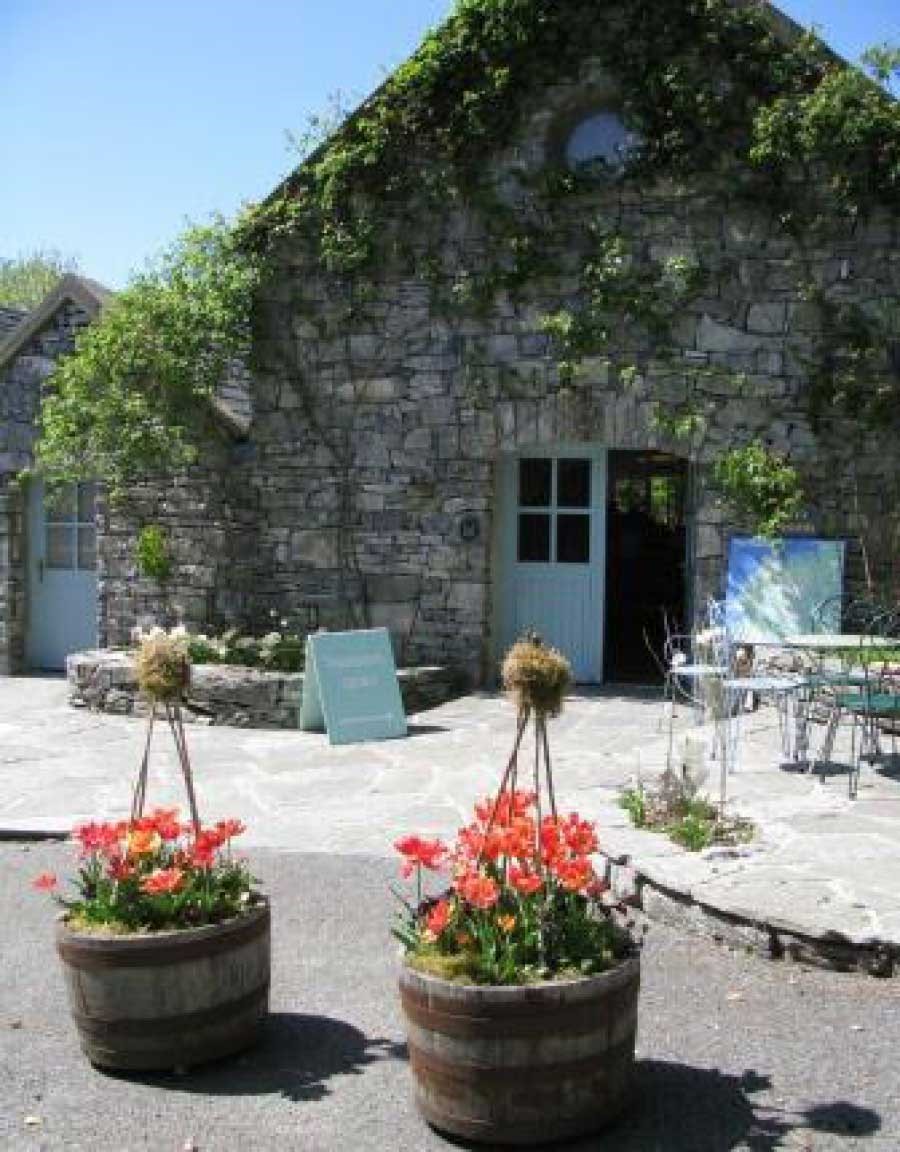
Leamaneh Castle 3 miles from Kilfenora
This castle has a formiddable presence at the crossroads between Kilfenora, Corofin and Carran and is an excellent example of two-part construction, having one portion built in the 15th century, with an additionin the 17th century.

Black Head / Caher Dun Inghus, Fanore
From the bare and windswept Black Head, where the coast road from Burren reaches its most northerly point, there are extensive views over Galway Bay. From here the road runs southeast along Ballyvaughan Bay.
A short 25 minute walk from here leads you across craggy limestone rocks to a bronze age ring fort. And for the more eager explores you can continue upwards to the cairn on top of geninagh mountain ( 1045 ft).

Bunratty Castle and Folk Park Bunratty near Shannon
The most complete and authentic medieval castle in Ireland, Bunratty was originally built in 1277.
In 1954 it was restored and now houses a fine collection of 14th to 17th century furnishings and tapestry. Medieval banquets are held year-round. The surrounding folk park hosts examples of traditional houses from surrounding districts.
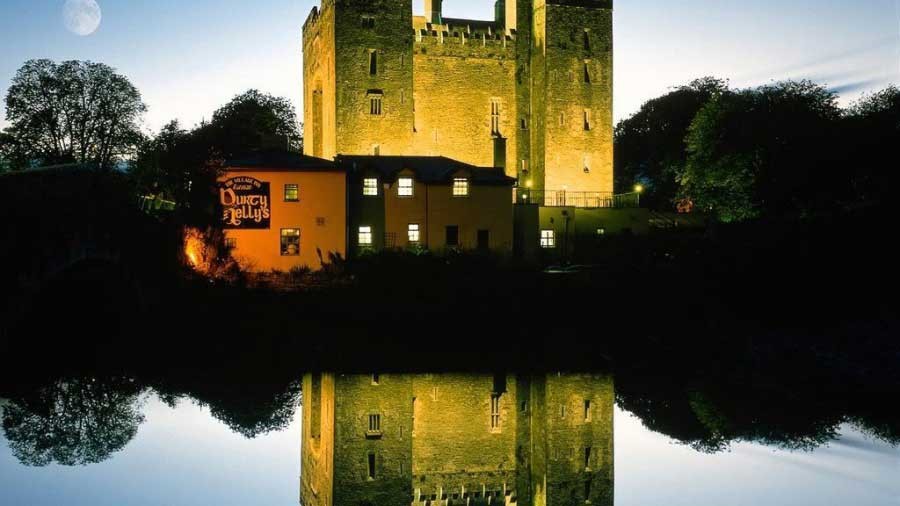
Burren Coast, Doolin(15 mins walk)
Continuing down the lane behind the Aille River hostel brings you to the rugged limestone landscape that is the beginning of the Burren. Wildflowers abound here, and wild goats can often be spotted. There are also numerous archaelological sites dotted along the coast.
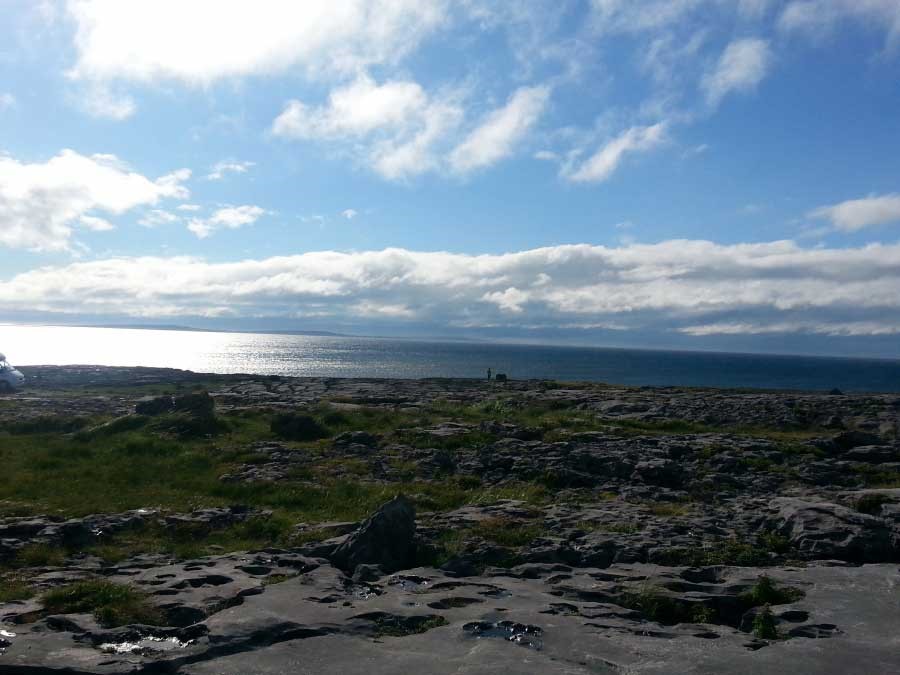
Contact
Address
Aille River Tourist Hostel & Camping,
Doolin,
Co. Clare,
Ireland
V95 AN80
Phone
+353 65 707 4260
